 “When you pick up something, think about what else it could be,” artist Rebekah Fraser advised an audience of eager workshop attendees ready to transform textile scraps and trash into fashion. At a table in front of her, Hamden resident Lola Fain sat with her late mother’s embroidered tablecloth, ready to breathe new life into a beloved family heirloom.
“When you pick up something, think about what else it could be,” artist Rebekah Fraser advised an audience of eager workshop attendees ready to transform textile scraps and trash into fashion. At a table in front of her, Hamden resident Lola Fain sat with her late mother’s embroidered tablecloth, ready to breathe new life into a beloved family heirloom.
Fifty fashion fanatics from ages five to 75 gathered at Bregamos Community Theater last Saturday for the Trash-to-Fashion Ball and workshop, the culminating event of a months-long event series and exhibition organized by Fraser, the project’s founder and director.
Fraser, wearing a handmade dress of 200 strung-together credit cards (sourced from both herself and friends, she noted), opened the pre-ball “trashion” workshop with remarks and introduced fashion design, styling, and reuse experts who would be assisting attendees. They included designers Tea Montgomery and Donald Carter, stylist Lauren Sprague, and creative reuse specialist Lisa Spetrini, the executive director of Ecoworks.
“Every mistake is a new idea … You just gotta create. That’s what this is all about,” Carter said.
Equipped with a table stacked with textile scraps donated by Goodwill of Southern New England, crafting materials, and various bits and bobs, it was time to let the magic begin. Attendees browsed the available materials or worked on their own garments with assistance and expertise from designers.
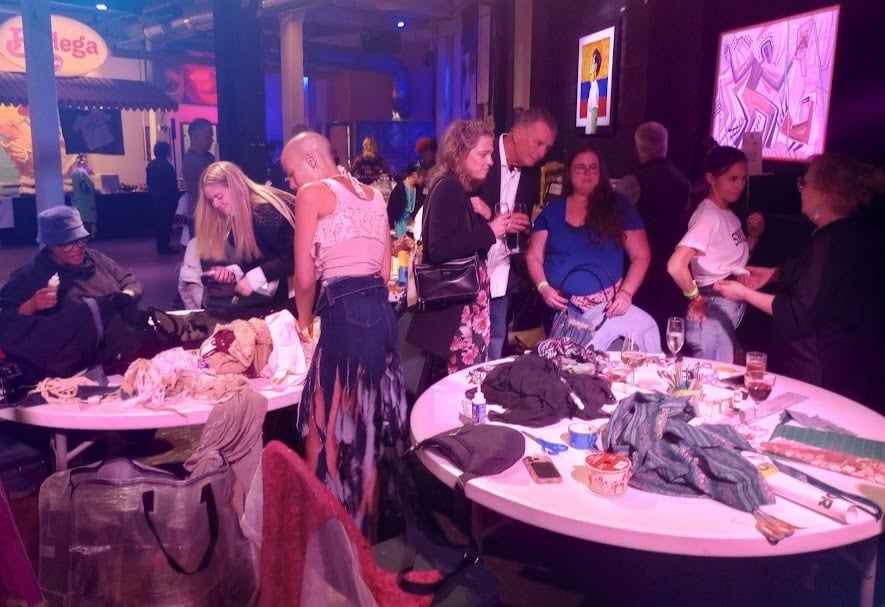
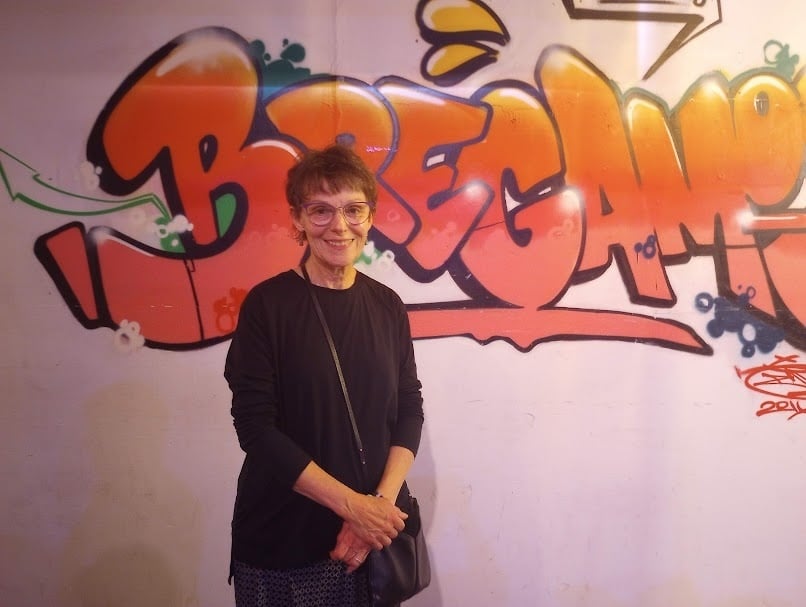
Artist Kathryn Frund. Adrian Huq Photo. The above photo is contributed by Trashion Queen Rebekah Fraser.
Among the attendees was artist Kathryn Frund, who has a studio at Erector Square. She was drawn to this event as an environmental fiber artist herself; Frund uses plastic and synthetic fibers in her practice to create room-sized nautical maps of the world's oceans.
To source her material, Frund visits Goodwill outlets and places where people donate end-of-lifecycle clothing, aiming to “call attention to the invisible waste stream” through her artwork.
Frund expressed her concern with cheaply made, mass-produced, “fast” fashion, pointing to clothing dumps in the Global South that bear the brunt of the burden of discarded clothing.
“I work with a lot of fast fashion …you’re basically wearing plastic,” she said. “That stuff is toxic. It doesn’t break down [in the environment] … It’s just waste material.”
Frund creatively transformed the sari and button-down shirt she brought to the workshop into a dress and crafted a colorful headpiece.
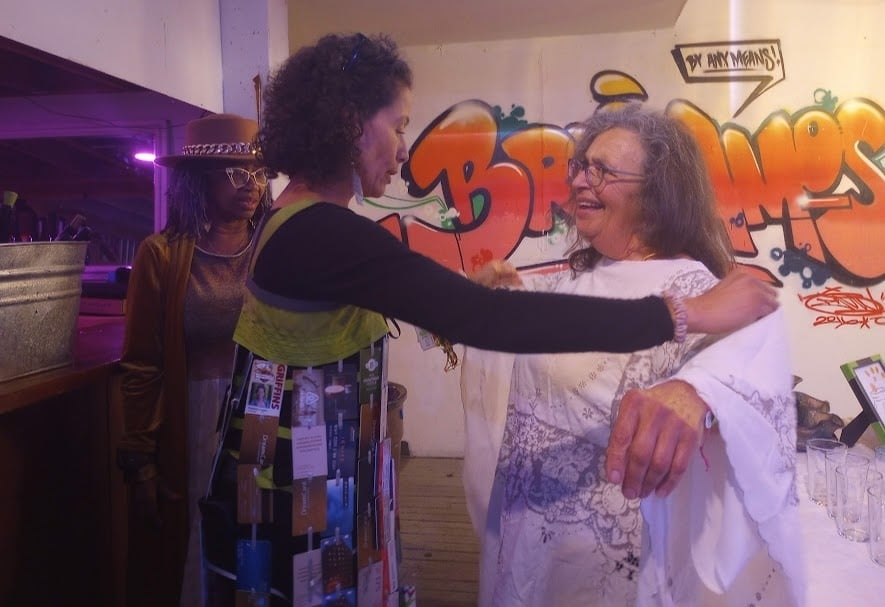
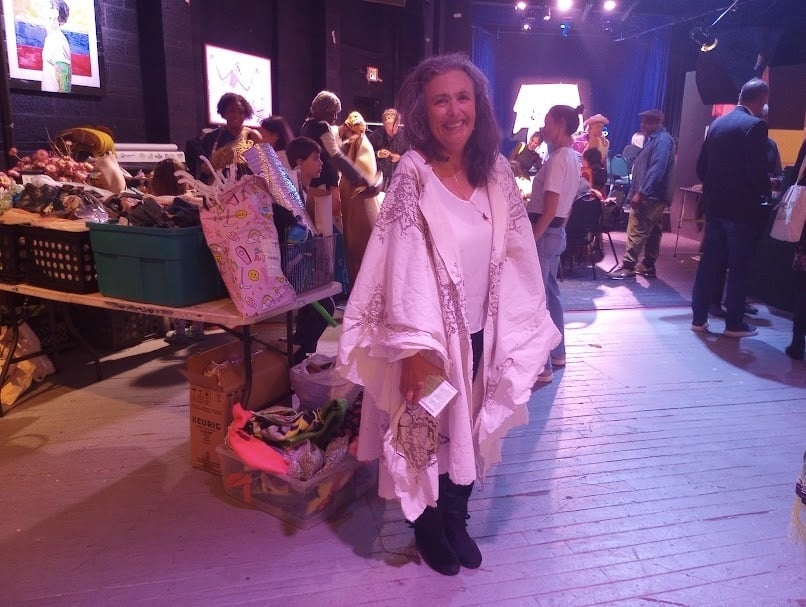
Adrian Huq Photos.
Fain, a volunteer at EcoWorks, brought her late mother’s tablecloth to the workshop. Fain sought to reimagine the object—a cherished relic from her late mother, a Holocaust survivor who had brought it over from Europe—without feeling like she was wearing something meant to spruce up dinnertime.
“[My mother] would use it occasionally for the Sabbath or holidays, and she was very meticulous,” Fain remembered.
With technical help from Fraser and the assurance that “nothing is sacred” when it comes to being comfortable refashioning your clothing, Fain walked away with a poncho-style jacket she was happy with.
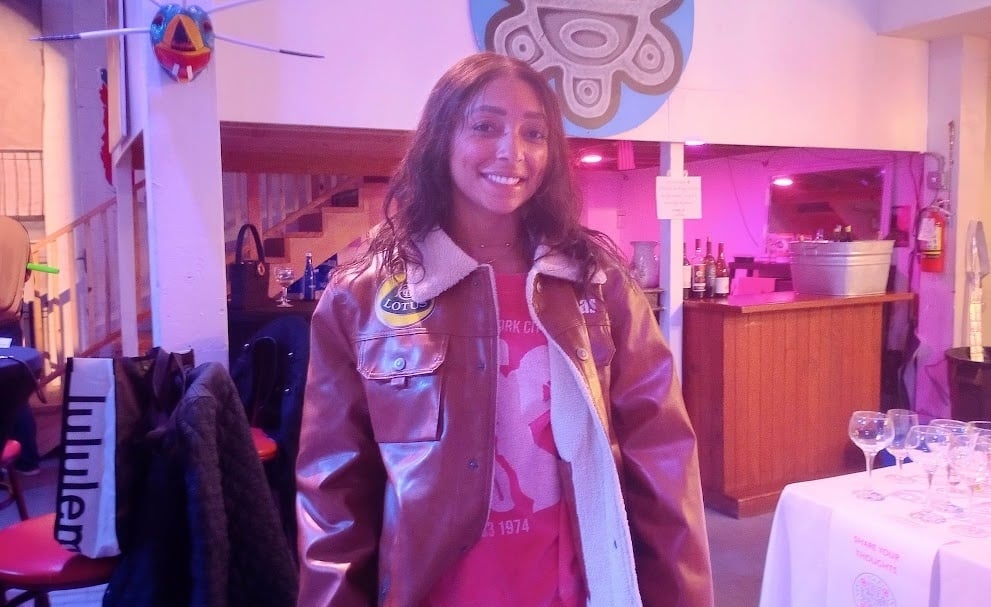
Ball attendee Christie Dey, a graduate student at Yale School of the Environment who hopes to break into the sustainable fashion field. Adrian Huq Photo.
Once 7 p.m. rolled around, it was time for workshop attendees to wrap up on their pieces and switch to party mode. Dancing and mingling commenced with music by DJ Dooley-O and pink-and-purple lighting.
Pairs of attendees waltzed over to capture their new outfits at Lotta Studio’s Photo Booth, a nook built up with cardboard boxes on either side and a back wall of plastic containers strung together by Howard el-Yasin. Behind the camera, photographer Mistina Hanscom encouraged bold and expressive poses.
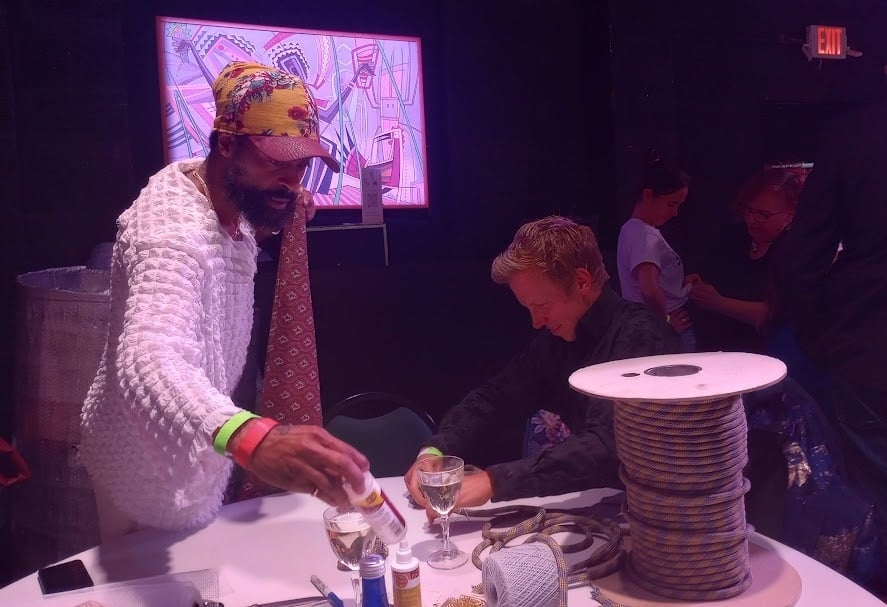
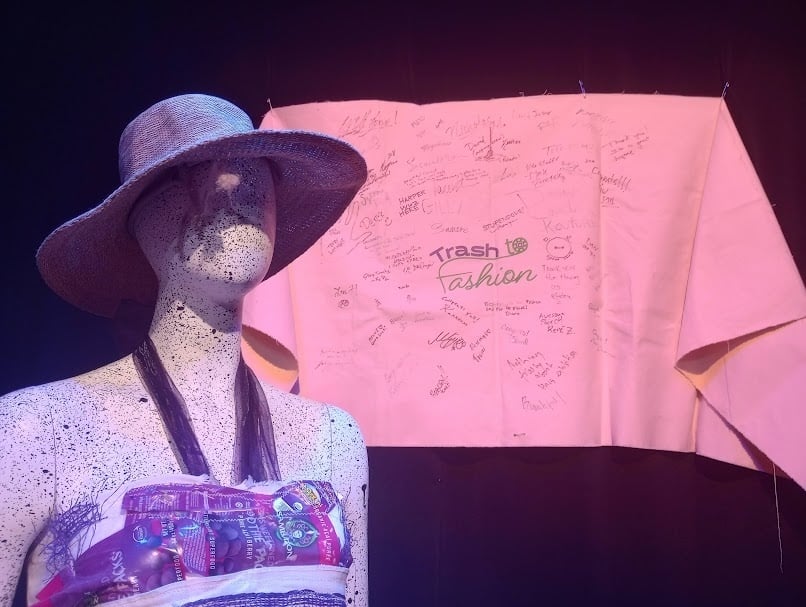
Top: Designer Tea Montgomery, of Threads by Tea.
Dinner from Claire's Corner Copia, Massaro Community Farm, and Whole Foods brought local and vegetarian options to the forefront, reducing the food’s environmental impact by excluding meat options and minimizing the distance that ingredients and caterers had to travel. Plant-based ice cream sandwiches from Via Lactea provided a sweet (and totally believable) vegan dessert.
The event exhibited a high standard for zero-waste, featuring water in recyclable glass bottles, compost bins for food scraps and napkins, and unique reusable glasses, plates, and utensils that attendees could wash and take home with them. For extra flair, attendees could even personalize their glasses with colorful permanent markers.
In the background, the ball offered opportunities to dive deeper into the circular and reuse economy. At 9 p.m., a Helpsy truck arrived in the parking lot to collect several bags of textile recycling from event organizers and attendees. Diego de la Cruz of Pistachio Print Co., a small business based in Portland, Connecticut, was also on site to screenprint garments from attendees with the Trash to Fashion logo in gray and green paint.
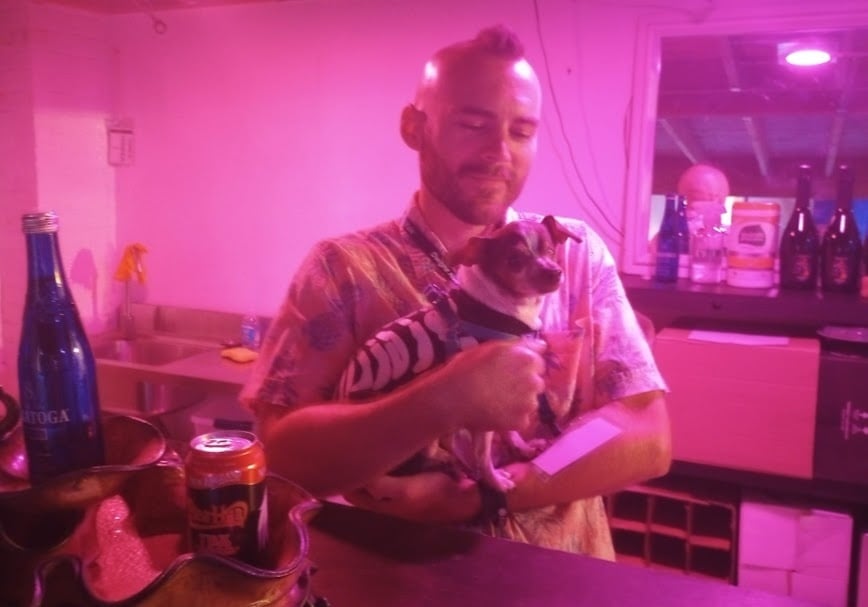
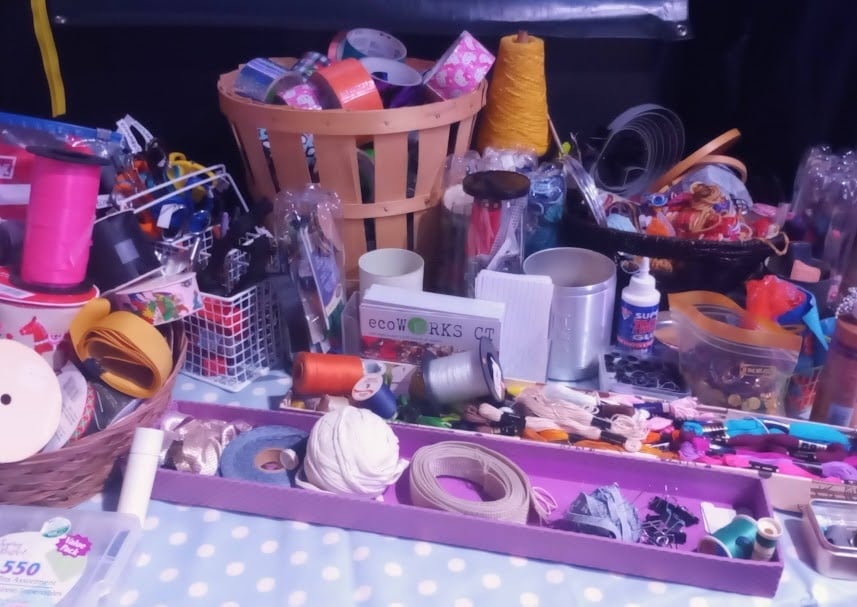
Top: Derek Faulkner. Adrian Huq Photo.
Derek Faulkner, a member of the planning committee who served as the Ball’s bartender, joined the Trash to Fashion team at the beginning of the year. He was particularly fond of the series’s emphasis on tangible, interactive activities that encouraged people to take sustainable action.
“Rather than doing something like a show with a runway where it’s passive activity, [Rebekah] was really looking for something that was active and where people were involved and engaged,” Faulkner said.
“Hands-on events are important to show people that they have agency, to show people that they can make a difference, that they can be part of something positive for our environment.”
Subscribe to the Trash to Fashion Substack channel here. Find them on Instagram here. As for what’s next for Trash to Fashion, Fraser is seeking funding to continue the project. Donate via Dwight Hall at Yale’s Paypal here.